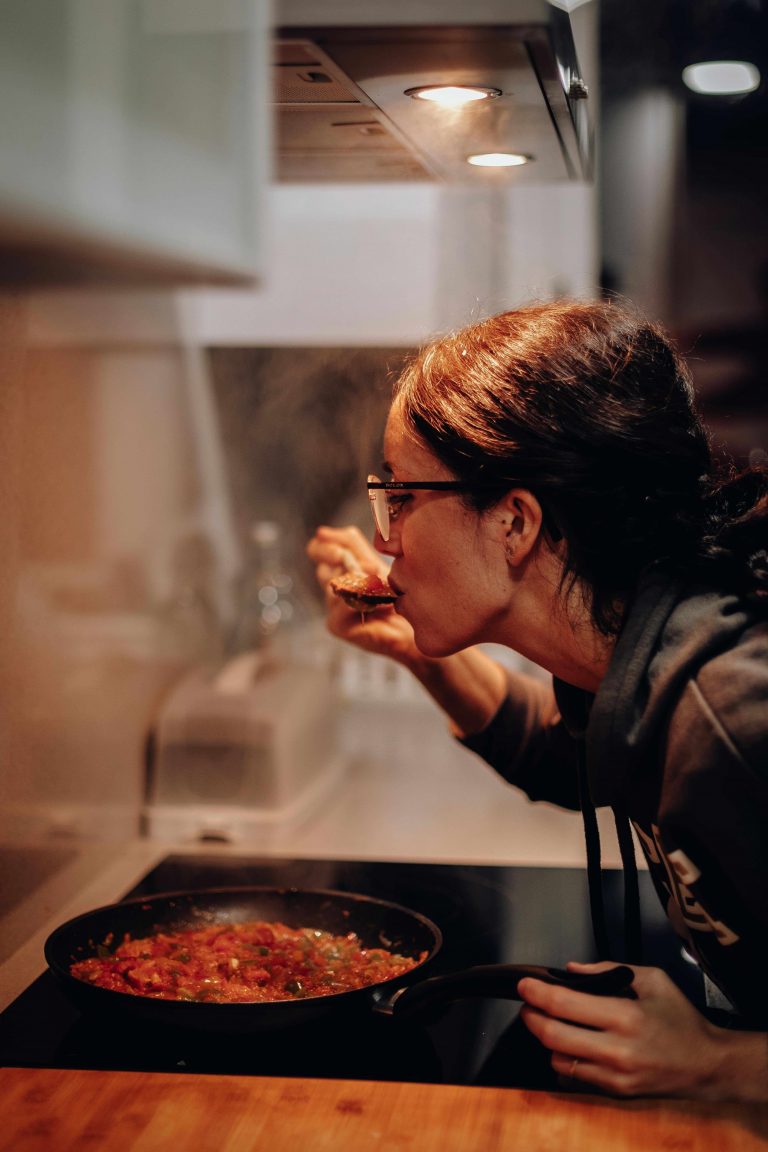Making dinner isn’t always a smooth ride in the kitchen. A lot of things can go wrong mid-cook, ruining the meal you’ve worked so hard on. Instead of throwing the towel in the ring and ordering in, use our real-time kitchen rescue guide to salvage the situation. The goal here isn’t to learn for next time, it’s to rescue tonight’s dinner before it becomes a write-off!
The 4 most common ways dishes fail
1. Flavour fails
Flavour goes wrong when any one element goes too far: salt, acid, sugar, and heat. Here’s how to pull a dish back into balance:
Salty foods:
- Rinse: If you’re still in the beginning stages of the dish, rinse the salty foods (like veggies and proteins) and carry on. If the salty source is the base gravy or pan juices, throw it out and start again.
- Add lemon juice or some sugar: If your dish is just slightly too salty, add a few drops of fresh lemon juice or a teaspoon of sugar to balance it out.
- Add a potato: Add a peeled and quartered potato to the dish. Think of them as magnets that suck up excess liquids and salt.
- Add cream or yoghurt: Dairy can often help neutralise overly salty or spicy foods. A tablespoon or two should bring relief.
- Pivot: If you can, turn the dish into a stew or soup by adding water.
Sweet foods:
- Add salt: Many people think sweet foods don’t need salt. However, salt helps bring out the flavour of all foods, even sweet ones. Add a pinch to help balance out the overall taste of the dish.
- Add dairy: Dairy helps neutralise flavours. Depending on the dish, add some butter, cream, or yoghurt.
- Add an acid: Acids, like salt, also help balance flavours. For sweet dishes, add a few drops of lemon juice or white vinegar.
Acidic foods:
- Add dairy: Cream and yoghurt should help neutralise the acidity.
- Add sugar: Most forms of sugar, like brown or honey, should balance out the acidity of foods.
- Add bicarb: Bicarbonate of soda is great for balancing out acidity. Add a spoonful to sauces with vinegar, lemon, or tomatoes.
Spicy foods:
- Add sweetener: Honey and sugar are great to use to balance out overly spicy foods.
- Add yoghurt or cream: Dairy is a great ingredient to use to neutralise spice. The fats present help absorb the hot, spicy flavour, soothing your palate at the same time.
- Add a potato: Potatoes don’t just have magical powers for overly salty foods, but also for overly spicy ones.
2. Texture fails
Missed timers and wrong heat settings show up as dryness, mush, toughness or split sauces: these are the quickest mid-fixes:
- Dry meat: Shred it and mix with the pan juices, gravy, or your favourite sauce (like mayo); or baste it with melted butter to add moisture and flavour.
- Tough/undercooked veg: Remove and chop the veg into smaller, uniform cubes to help it cook more evenly.
- Split sauce: Immediately turn off the heat source, add an acid (like lemon juice or vinegar), or a tablespoon of hot water, and whisk or blend to re-emulsify.
- Sauce or soup is too thin: Add a slurry of cornflour (one teaspoon cornflour with one teaspoon cold water) and simmer until thickened.
- Sauce or soup is too thick: Thin it out with a liquid – either water, milk, cream, or stock.
3. Appearance fails
Sometimes a dish tastes fine but looks like a fail, and presentation alone can tank a meal. Fix the visuals without remaking the food:
- Trim: If there are any burnt pieces, trim them. Use a pairing knife for cakes and roasts, or a micro-grater for tart bases and cookies.
- Grill on high: Crank up the heat and grill the food for 5 to 10 minutes to give it a quick lick of colour.
- Break it down: If you need multiple elements to make a dish, like in a trifle or lasagne, but those elements aren’t perfect for stacking, then plate them individually. Call it ‘deconstructed’ and be on your way.
- Sauce or gravy it up: Sauces and gravies are a secret weapon. Not only do they add extra flavour, but they can also help you cover up any boo-boos on the plate.
You don’t need a ‘next attempt’ to succeed. Most kitchen disasters can be rescued in the moment. Think like a debugger: stay calm, diagnose, counterbalance, trim, pivot or deconstruct. Small mid-cook changes can save an entire dinner.

